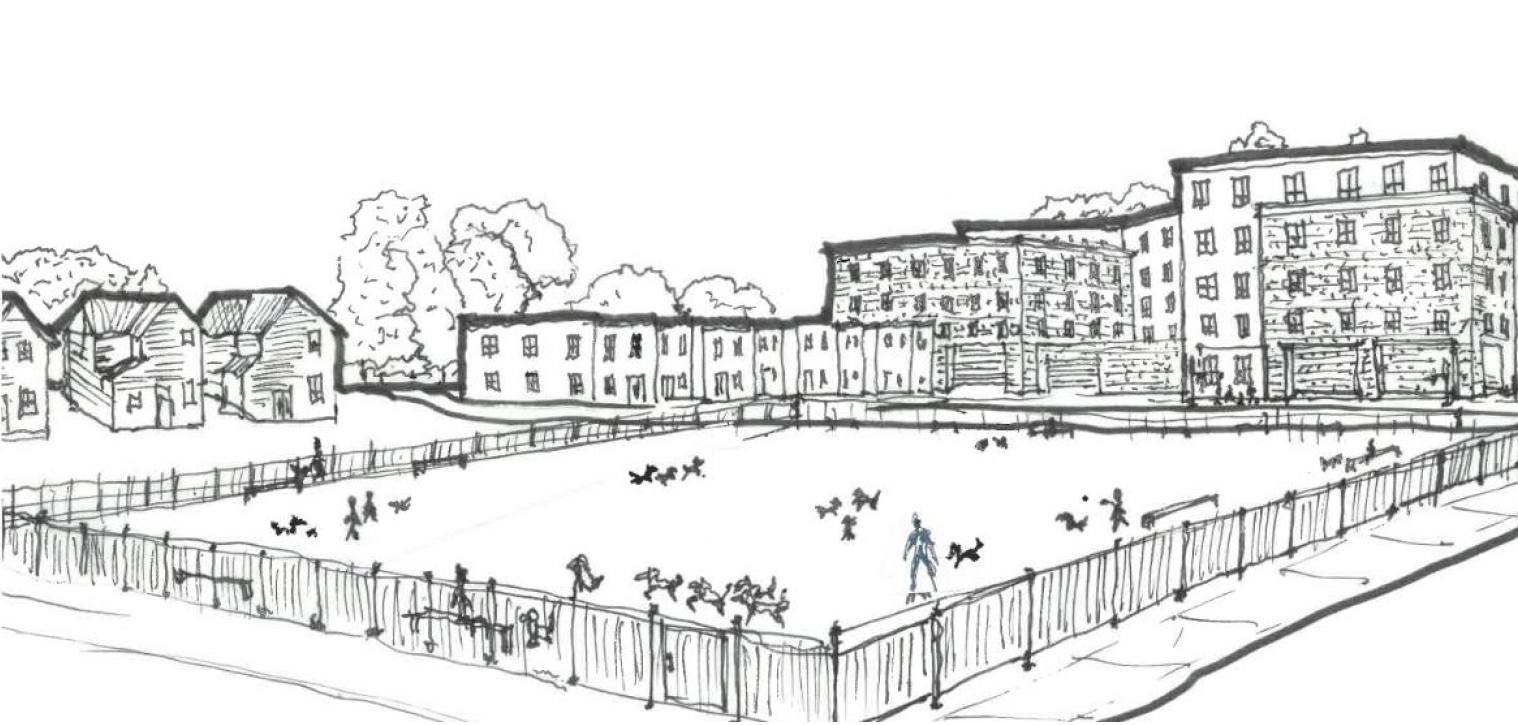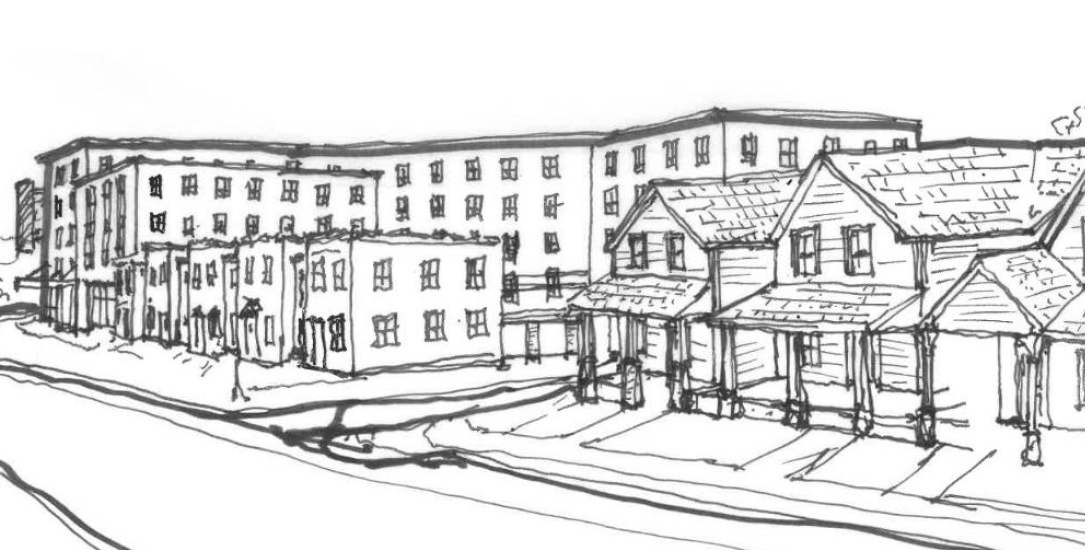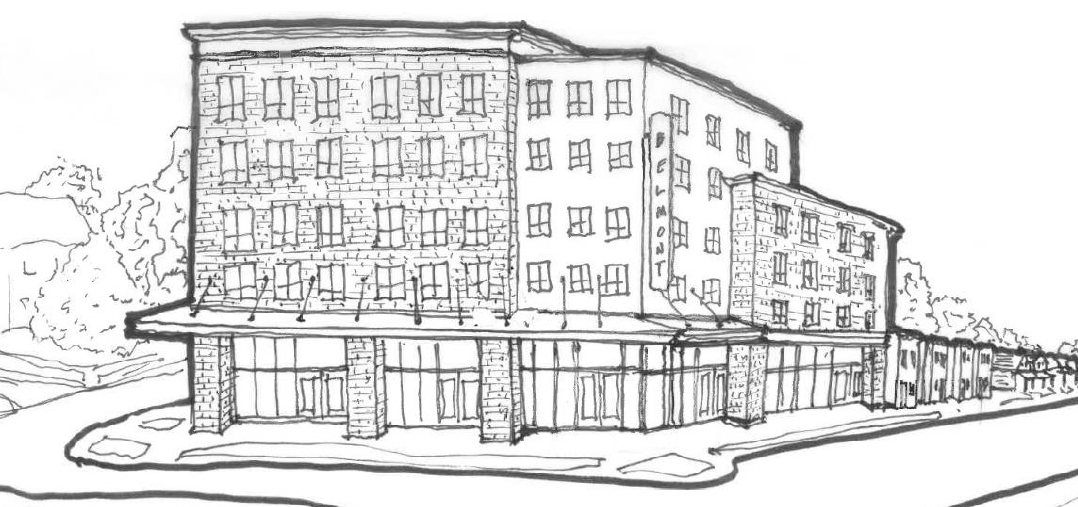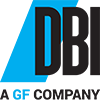Each year the American Institute of Architecture [AIA] Virginia Emerging Leaders in Architecture Program [ELA] gathers a small group of select architects and a few top students together to provide “an intensive program of educational sessions structured around presentations, discussions, team exploration, analysis, consensus-building, collaboration, and case study activities undertaken over the course of a year.”
DBI Senior Manager Steve Foster, AIA, was selected to participate in the 2022 ELA class.
During the year-long program, the 16 class members gathered each month in different locations across Virginia to participate in leadership seminars, visit project sites, listen to guest speakers, and network with other architects and industry professionals. “We saw a bunch of different stuff,” Steve said, complementing the program on the range of topics and activities he got to experience as a participant in last year’s ELA class. Each session, according to Steve, was packed with guest speakers from different sectors of the industry. “We got to listen to people with decades of experience,” he said of the historians, government officials, local architects, developers, and project stakeholders that came to speak with them.

Of the monthly sessions attended by the class, two also included planned work sessions dedicated to collaborating on their project, which focused on solutions and improvements for the Belmont-Fallon community in Roanoke, Virginia. One of the city’s oldest neighborhoods, Belmont-Fallon was a booming suburb from the 1920’s through the 1950’s, supporting local manufacturing industries. However, as these industries declined, so did the neighborhood. The city of Roanoke named Belmont-Fallon a Target Area in 2019, meaning the city’s goal is to focus on making public improvements in this area within the next 5 years.
In addition to their in-person meetings, ELA members also met virtually every week to discuss project deliverables and collaborate on work for the project. “It took a big commitment from everyone to make this project a success,” Steve said. “The end result was super rewarding, and really ambitious. We had many different ideas for the Belmont-Fallon area, and we chose to develop several of them simultaneously.” The group pursued design recommendations for neighborhood gateways and infrastructure, a pedestrian bridge, a community center, and improvements to several sites picked by the group within the target area.

Steve explained that, in order to accomplish this, he and his classmates split up into smaller groups, each focusing on a different design objective. “Splitting up into smaller groups really helped drive our work forward and maximize our productivity,” he observed. “All the participants in the program are creative people with their own opinions, and developing ideas and being able to act on them was more effective in the smaller groups.”
Crucial to the design development process was the feedback of members of the Belmont-Fallon community. To that end, the ELA solicited opinions from people living in the Belmont-Fallon neighborhood as what they saw as the most important improvements needed in their community, through both a youth outreach program and community engagement. “It was important that we made sure the voices of the community were heard, all the way through the process,” Steve said. “During the kids charette and community outreach, we were able to ask people not only what’s they would like to add to their community, but also what they already loved and cherished about where they lived.”
In preparation for the final presentation of their ideas to the City of Roanoke, the ELA group received feedback about breaking down their “grand vision” for the Belmont-Fallon neighborhood. “You’re looking at millions of dollars of work,” reflected Steve. “Breaking it down into smaller steps that can be built upon to reach that grand vision makes it more attainable.”

The ELA Class of 2022 presented their work at AIA’s Architecture Exchange East. Steve, who was involved in the subset of the project that focused on Belmont-Fallon’s West Gateway, explained how they broke down their vision for the area into relatively bite-sized improvements that the city could more easily undertake and that would have an immediate beneficial effect for the community. The West Gateway site is privately owned, but is intended for development in the future. “Our idea for the West Gateway site was to add temporary pop-ups to support the community,” said Steve. “The challenge was trying to weave our pop-up suggestions in a way that could be integrated into a successful long-term, permanent development for the site.”
In reflecting on his experience with the ELA, Steve mentioned being grateful to both Cathy Guske of AIA Virginia and Breanna LaTondre Helms, the ELA Program Chair and a member of the ELA class of 2019, for their leadership and support throughout the program.
Above all, Steve emphasized again and again what a pleasure the group was to work with. “The whole group was amazing – everyone was so talented and dedicated,” he said. “The best part about this whole experience was the people I had the opportunity to work with. And, I learned a lot – things that I’ve already begun applying to my work at DBI.”
Those interested in seeing the ELA’s complete presentation can view the video on AIA’s website:
https://www.aiava.org/ela-2022-class-project-presentation
